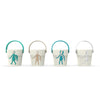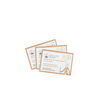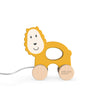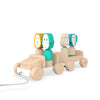Why Teaching Toddlers Sign Language to Communicate is a Good Idea
We all recognise that scenario. It’s late in the evening, the early hours of the morning or another extremely inconvenient time. Your small child is squawking at the top of their lungs and verging on losing it, but you can’t understand what they want?
Are they hungry? You try this, but no. Do they need changing? Nope. What they can’t tell you is that their teeth are hurting, that they’ve dropped their favourite teddy on the floor and they’re too hot. You take another half an hour to work this out, by which time the meltdown is in full force.
What are the benefits of using sign language for me and my toddler?
It can be incredibly frustrating for both you and your toddler when you can’t communicate. In the time before your toddler learns to speak and form words and sentences, it’s a guessing game working out what they want.
Removing some of the frustration between you and your toddler when it comes to communication will reduce stress for both of you and other members of the household. It may also allow siblings to start forming stronger bonds with their little brother or sister from an earlier age. Tantrums could be reduced, needs met and a calmer way of communicating established.
Toddlers who learn sign language are believed to gain psychological benefits such as an improvement in confidence and self-esteem. Signing also gives children a way of communicating if they are too distraught to speak clearly.
Will teaching my toddler sign language delay their speech?
Some parents worry that teaching their child sign language might hinder their progress with language. It’s a fear that if your child can say what they want without speaking, there won’t be a need, want or motivating factor when it comes to communicating using words.
According to research, however, teaching your toddler sign language won’t have an negative effects on their speech - nor will it delay the development or progression of speech.
This sentiment is also echoed here by speech-language pathologist, Carolyn Davidson.
Can teaching sign language to my child help encourage language development?
The research suggests that yes, teaching sign language can have a positive and encouraging effect on the development of speech. It can actually promote language development by providing a helpful bridge to speech.
How we use signing to communicate with our children and each other, naturally
When we speak to each other, we rarely keep our hands and arms immobile, hanging by our sides. It’s natural for human beings to move their arms, hands and fingers when we talk. We gesticulate to emphasise what we’re saying in an unconscious effort to help make ourselves understood.
The signs people make when talking are often very similar. We often put our hands on the parts of our bodies that are feeling discomfort or pain. When we say we’re hungry, we might put our hands on our stomachs or if we have a headache, we gesture to our heads. If we want someone to close a door for us, we might gesture with our arms to indicate this with a shutting (or flailing, if you’re me) motion or extending an arm and flicking a hand.
Movement and speech go together naturally, it’s just that signing is a conscious repetition of movement that coincides with a certain meaning or word.
What signs should I teach my baby?
Complicated signs will be hard for babies and toddlers to pick up. As they don’t yet have fully developed motor skills, anything that isn’t simple will be potentially confusing and difficult for your child.
You can try using baby sign language, adopted specifically for babies and toddlers. You could also make up your own signs that just you and your family use!
However you encourage communication with your baby, it’s positive progress that will boost their confidence and help you both understand each other a little better!



































